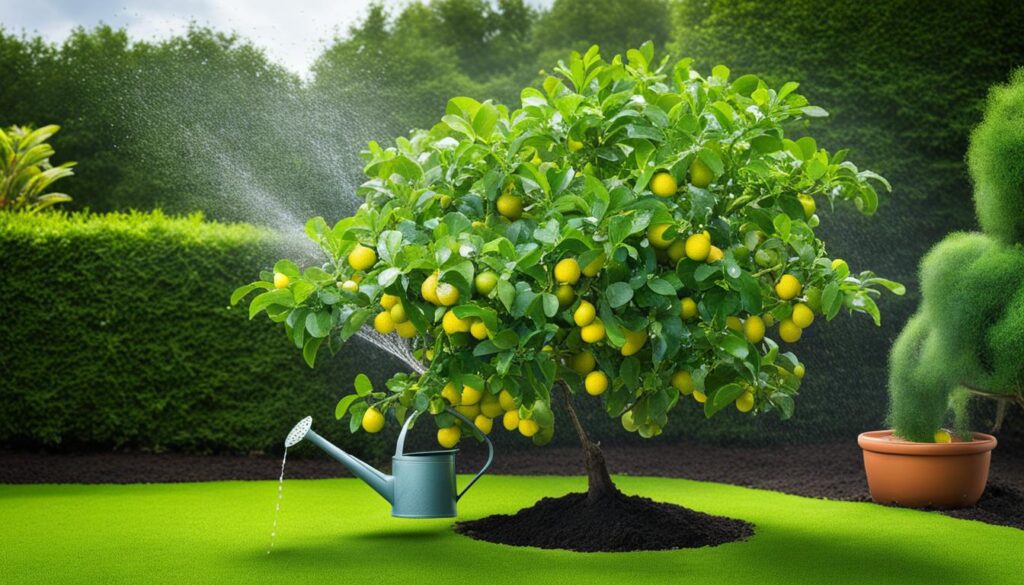Welcome to our guide on how to grow a lime tree! If you’ve ever dreamed of having your own fresh supply of zesty limes, this article is for you. In this comprehensive guide, we’ll cover everything you need to know about caring for a lime tree, from selecting the right location and soil to watering and maintenance tips.
Lime trees, scientifically known as Citrus aurantiifolia, are prized for their culinary value and versatility. Whether you want to add a tangy twist to your cocktails, enhance the flavor of your dishes, or simply enjoy the refreshing taste of a lime-infused beverage, growing your own lime tree can provide a reliable source of this aromatic citrus fruit.
When it comes to nurturing a lime tree, there are a few key factors to consider. Providing sufficient sunlight, choosing the right soil, and protecting the tree from pests and diseases are essential for its growth and productivity. By following our expert advice and implementing proper care techniques, you’ll soon be on your way to enjoying the fruits of your labor.
In the next sections, we’ll delve into the details of each aspect of lime tree care, starting with how to choose the right location and soil. So, let’s get started on your journey to growing a thriving lime tree and delighting in the abundance of limes it produces!
Choosing the Right Location and Soil
Lime trees require a sunny location with at least 6 hours of direct sunlight per day. They can tolerate partial shade but will produce better fruit quality with full sun exposure.
The soil should be well-drained, loamy, and slightly acidic to neutral (pH 6.0-7.0). Conduct a soil pH test before planting and amend the soil as necessary to create an optimal environment for the lime tree to flourish.
Adding organic matter like compost or well-rotted manure to the soil can enhance fertility and provide the necessary nutrients for the tree’s growth.
Watering and Maintenance
Proper watering and maintenance are essential for the health and vitality of your lime tree. Here are some important guidelines to follow:
1. Watering:
Regular watering is crucial for maintaining the optimal moisture level in the soil around your lime tree. However, it’s important to avoid overwatering as this can lead to root rot. To ensure the right balance, keep the soil consistently moist but not waterlogged. One effective method is to use a soaker hose or drip irrigation system. These systems help distribute water evenly and reduce the risk of overwatering.
2. Mulching:
Applying a layer of mulch around the base of your lime tree offers multiple benefits. It helps retain moisture in the soil, preventing excessive evaporation. Mulch also acts as a natural weed suppressant, reducing competition for nutrients and water. Apply a 2-3 inch layer of organic mulch, such as wood chips or shredded bark, while making sure to keep it a few inches away from the trunk to avoid rotting.
3. Pests and Diseases:
Regularly inspect your lime tree for common citrus pests and diseases to proactively address any issues. Common pests include aphids, scale insects, and caterpillars. If you notice any signs of infestation, take appropriate action, such as using organic insecticidal soap or introducing beneficial insects to control the pests. Additionally, monitor for signs of diseases like citrus canker or greening. Promptly address these issues by following recommended treatment methods to protect the overall health and productivity of your lime tree.
With proper watering and maintenance, you can ensure that your lime tree thrives and produces an abundance of delicious limes. Remember to provide consistent moisture, implement mulching techniques, and stay vigilant against pests and diseases.
Conclusion
Growing a lime tree can be a rewarding and enjoyable experience. By providing the right growing conditions, including ample sunlight, well-drained soil, and regular watering, you can nurture a healthy lime tree that produces delicious limes. Remember to protect the tree from common citrus pests and diseases through proper maintenance and monitoring.
While the fruits from your homegrown lime tree may not be as large or juicy as commercial varieties, they will add a zesty and fresh touch to your culinary creations. The process of growing and caring for your lime tree can be a source of great satisfaction and fulfillment.
By taking the time to attend to the needs of your lime tree, you will be able to experience the joy of harvesting your own homegrown limes. The vibrant taste and aroma of freshly picked limes will enhance your cooking and add a burst of flavor to your dishes. So, enjoy the journey of growing and caring for your lime tree, and savor the fruits of your labor. Happy lime tree gardening!
Can I Use Seed Potatoes to Grow a Lime Tree?
No, you cannot use seed potatoes to grow a lime tree. Seed potatoes are specifically meant for growing potato plants, while lime trees are typically grown from seeds or cuttings. Focus on making seed potatoes at home for a successful potato crop, and explore other methods for growing lime trees.










